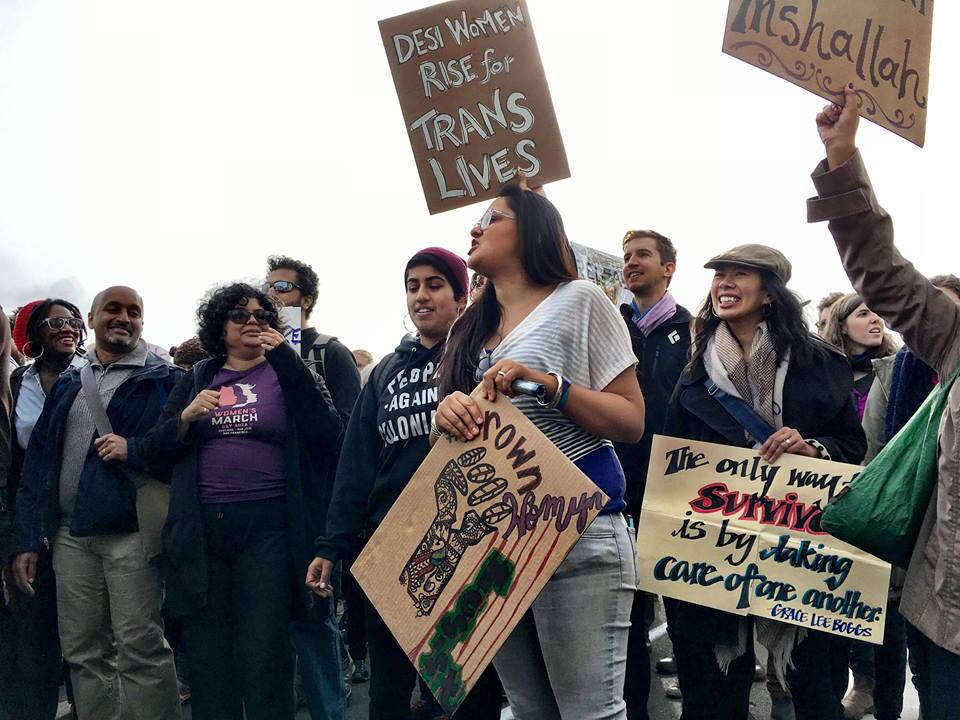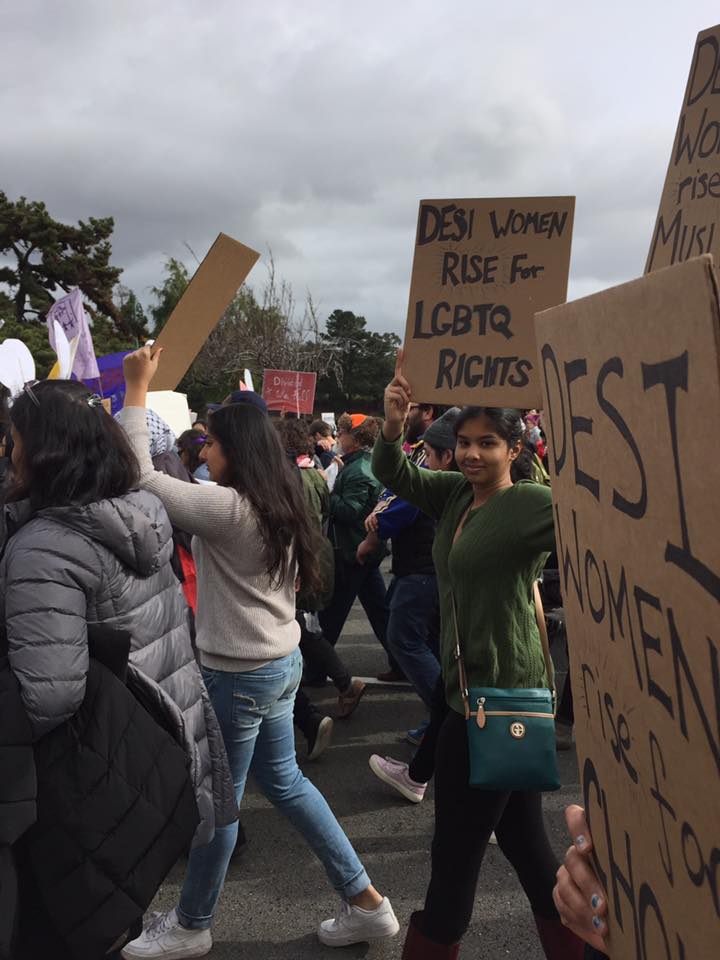
In conversation with Anirvan Chatterjee and Barnali Ghosh, the founders of the Berkeley South Asian Radical History Walking Tour, about their work, state of South Asian activism in the US and more.

Anirvan Chatterjee and Barnali Ghosh on UC Berkeley campus. Courtesy: APIENC (API Equality – Northern California)
The year gone by has been a dizzying one of hate crimes against South Asians in the US. But then, that statement could have easily been said at the end of 2016, too.
According to the US Federal Bureau of Investigation (FBI), which recently released statistics on rates of violence in 2016, anti-Muslim hate crimes in the US increased by 19%, anti-Hindu hate crimes increased from five to ten, i.e. 100% and anti-Sikh hate crimes increased by 17%. The Sikh Coalition, as well as other South Asian groups in the US, however, said that these numbers are flawed because the FBI data relies on voluntary reporting of hate crimes. According to them, the figures are actually much higher.
Donald Trump deserves some of the blame for this. He is a president who finds it appropriate to mock the way Indians speak and who courts the support of white supremacists.
Anirvan Chatterjee and Barnali Ghosh, a Bengali-American couple based in Berkeley, California, have, however, been pushing back against the dehumanisation of South Asian Americans long before Trump came on the scene. In 2012, they launched the Berkeley South Asian Radical History Walking Tour, a three-km tour in which participants visit sites key to South Asian activism, such as the café where one of the first South Asian queer meet-ups happened. Around 1,927 people have participated in their walk, which costs on a sliding scale between $7.50 and $17.50. Their next tour is scheduled for January 21. Now, Chatterjee and Ghosh are going through old newspapers for archived articles on South Asians in the Bay Area.
They recently spoke to this author about their work, their walking tour and the state of South Asian activism in the US today.
Excerpts:
How has your walking tour changed, if at all, since you started it? Has it taken on a different tone now that Trump is president?
The walking tour is very much an act of live political performance. It’s important for us to highlight stories and details that are in conversation with the present moment, that helps build the kinds of movements we need right now.
Sometimes that means focusing on very recent stories, including those of post-9/11 activism, resistance to INS Special Registration in 2002-2003, and most recently, about local responses to post-Trump racist attacks in 2016.
And sometimes that means going deep into the past. As racist far-right activists turn our city into their stomping ground, we’ve been digging into the story of Berkeley’s first South Asian protest, a mass action against a white racist speaker in 1908, over half a century before the Free Speech Movement. At moments like this, we need to remember that mass anti-racist action is part of our community’s heritage.
We were leading walking tours on January 28, the day of the Muslim ban 1.0 and of the airport protests across the country. We interrupted our own tour to share what was happening at JFK and SFO, because that was far more relevant than stories from a century back. Howard Zinn has a lovely essay called ‘What is Radical History?‘ In it he writes: “Historical writing always has some effect on us. It may reinforce passivity; it may activate us. In any case, the historian cannot choose to be neutral; he writes on a moving train.”
What has been the biggest surprise to you both since starting the walking tour?
We originally intended this tour more for folks who are newer to organising and activism. But we were happily surprised that the tour also resonated with folks who were themselves activists and organisers. We’ve had folks tell us that they were proud to know that they are part of a long tradition, following in the footsteps of ancestors. Some have brought friends and family members to help loved ones better understand the context of their work.
When we started, we thought it would be basically a one-shot. So we’re also still surprised that five years after we started the tour, there’s still sustained interest in learning about these histories.
Your walking tour is one among several like it that highlight minority communities in the US. Can you talk about some of these other walks?
We’re part of a long tradition of place-based people’s history storytelling. Some of our favorite new tours include the Chinese Progressive Association’s new walking tour of San Francisco Chinatown, the Resilience Archives digital tour of Bay Area LGBTQ Asian American and Pacific Islander history and Roberto Hernandez’s interactive tour of the Mission in the Detour app.
And we’ve loved collaborating with local partners, connecting histories of the anti-colonial Ghadar Party with other local tours about the Black Panthers and Irish American movements culminating in Easter Rising.
One of the most chilling stops on the tour was on Shattuck Avenue in downtown Berkeley where you both spoke about domestic violence within the South Asian community. How do people react when you share this story?
In the 1990s, Berkeley business owner Lakireddy Bali Reddy trafficked dozens of workers from India to work in his businesses. And he also trafficked several young women that he raped. The case exposes the challenges our communities face at the intersections of class, gender and caste oppression.
Participants are understandably shocked and disgusted to learn about the case, but we hope they’ll walk away with more than just the story of the Reddy family.
We also talk about the Alliance of South Asians Taking Action, an intersectional feminist organisation that did media advocacy, showed up at court hearings and organised a vigil in support of trafficked workers – one of the most important South Asian feminist organising moments in Berkeley.
South Asians are often eager to puncture the model minority myth. Why do you think it is important for South Asians to do so?
We’ve been in the US for centuries, but South Asian America is deeply shaped by post-1965 policies favouring skilled immigration. South Asians aren’t genetically predisposed to be doctors, engineers, academics – it’s just that those are the kinds of skills selected for them by US immigration policy.
We need to puncture the model minority myth to avoid being used as a racial wedge to attack other communities of colour. But we also need to take down the model minority myth to embrace the wholeness of our community, including folks who are working class, undocumented, artists, activists, queer, or otherwise made invisible by the stereotypes.
I love the articles you have uncovered in your Medium posts. One from The San Francisco Chronicle published in 1907 talks about ‘Fear Outbreak among Hindoos.’ Another from around the same time is about how to tie your turban. What do these articles tell you about South Asians in the Bay Area during that time period?
In addition to oral history, we’ve continued to do original archival research, looking at things like old newspapers and historical census data. Some of what we’re finding helps us understand how we got here.
A century ago, upper-class South Asian students were being welcomed by UC Berkeley faculty and leadership, and Oriental civilisations were sometimes celebrated by “cultured” White residents – even as South Asians were also being forcibly driven out of the city by White neighbours.
Being able to map these stories out in space and time helps us better understand the weird mix of stereotypes: model minority, exotic easterner, or feared foreigner.
How do you think South Asian activism has changed, if at all, since the tragic killing of Srinivas Kuchibhotla in Kansas in February in an apparent hate crime?
We don’t have data to back this up, but it feels like there’s a wave of post-9/11 South Asian immigrants who never fully internalised the fact that we could be so directly targeted by American racism and xenophobia. The murder of Srinivas Kuchibhotla was a wake-up call for many community members, particularly those who aren’t Muslim or Sikh.
When Kuchibhotla, a Hindu Indian H-1B technology worker, was murdered by someone who saw him as potentially “Iranian” and “illegal,” it reminds us that none of us are safe until all of us are safe, that attempts to protect any one part of the community are insufficient as long as adjacent communities are under attack.
We’re hopeful that the murder of Srinivas Kuchibhotla’s can be a potential catalyst for shared community action, in the same way that the murder of Vincent Chin was a catalyst for Asian American organising.
Zahir Janmohamed is a senior news editor at Hyphen, a magazine dedicated to Asian American politics, culture and arts. This article originally appeared in Hyphen in November 2017.





